1952 – Present Day
May 7th 1945 was a great date in world history. On this day, the Allies stood victorious over Adolf Hitler’s German Reich, and four months later, on September 2nd, The Second World War came to a total end when the Japanese forces signed their unconditional capitulation. The world was at last at peace again, but for the Americans things would soon become worrying once again. With the end of World War II, Korea – just like Germany – had been occupied by American and Soviet forces and split in two parts; South Korea under American influence and North Korea with the Soviet Union in its back. As with Germany, this action was taken to reunite the country, but it failed completely. On June 25th 1950, North Korea and its leader Kim Il Sung attacked South Korea, which was led by Syngman Rhee. Sung had proposed an attack to Stalin, believing that the South Korean government would fall by itself if they did so. Stalin approved of the invasion, since he did not believe that the Americans would interfere. After all, they had not done so in the civil war of China.
But they were greatly mistaken. President Truman had been heavily criticised by the Democrats, after having ‘lost’ China to the communism. Therefore, he could not sit idle when communist forces were marching into South Korea, no matter how important this area had been to the USA earlier. And so, the Korean War was a fact.
This, the very beginning of the long Cold War, worried the American politicians. Would the world fall into a third world war, only after five years of peace? The possibility was there and with this in mind, the Americans made themselves ready for such a situation. In the event of another global conflict, they would once again need to transport their troops to various locations around the world. Air transportation could not yet provide the same transport capacity as the great ocean liners of the time, and maybe it was the words of Sir Winston Churchill, when he spoke of the Cunard Line’s two Queens, that inspired them to build a great vessel of their own:
‘Built for the arts of peace and to link the Old World with the New, the Queens challenged the fury of Hitlerism in the Battle of the Atlantic. Without their aid the day of final victory must unquestionably have been postponed.’
The two great Queens had during World War II contributed to the war effort by transporting vast amounts of forces across the globe, with a total of 320,000 from North America to Europe alone. Such transportation was doubtlessly valuable in the event of war, so the government, in joint effort with the United States Lines, decided to order a liner that would become one of the most splendid ones that has ever sailed the seas. A liner, which would for the first time in a century enter the Americans in the race on the North Atlantic.
The American government set up three conditions, and the ship would have to meet these on all points. The vessel would have to be fast, safe and easy to convert into a trooper. The task of building the new liner was given to the Newport News Shipbuilding and Dry Dock Company in Virginia, all supervised by the master naval architect William Francis Gibbs. For the last three decades he had been dreaming of a 1,000-foot liner capable of high speeds, and he had been in charge when the German liner Vaterland was rebuilt into the Leviathan after the First World War. Furthermore, he had already constructed ships like the Malolo and the America. But this was the first time he was given practically free hands to build the finest ocean liner ever. The keel of his future masterpiece was laid down on February 8th, 1950.
The new ship was christened on June 23rd 1951, and the name she was given could not fail to awake national pride with the American people. She was called the United States. To give her the great speed that was called for, Gibbs had installed massive turbines originally intended for aircraft carriers in his newly born brainchild. And in order to meet the other two requirements of safety and quick convertibility, Gibbs had chosen to give his vessel a new, simpler type of interior design. Almost obsessed of creating a completely fireproof ship, Gibbs had been careful to use no flammable materials when fitting her out. The United States was a ship of glass, steel, synthetics and aluminium. Furniture, handrails and deckchairs were all made of aluminium. Gibbs even approached the Steinway Company with a suggestion that they would provide a piano of aluminium for the United States, but they totally refused to do so. In the end it was said that the only wood that could be found on board the United States was that in the piano and the butcher’s block. But no passenger could complain about the ship’s comfort.
The simple interiors also made the possible conversion into a troopship an easy task. Compared to the older ships, which could take up to three months to convert, the United States could be turned into a trooper capable of carrying 15,000 souls in a mere matter of days. Since it had been the government who demanded these features, they would pay almost 70 percent of the ship’s total cost – which ended up at $78,000,000.
With a length of 990 feet the United States was the longest American ship ever built. She had a slightly smaller beam than the two Queens, but this had its purpose. 101 feet wide, she could just make it through the Panama Canal, something the two giant Cunarders were not capable of. This was also a promise of quick troop transports, should any ever be necessary. Actually, the United States would never serve as a trooper, although she was put on stand-by during the Cuban missile crisis in 1962.
But the world would above all remember the new United States for one thing – her great speed. During her six weeks long sea trials, she averaged a fantastic 38.25 knots. Going in reverse, the United States could reportedly maintain a good 20 knots. All thanks to her Westinghouse turbines that provided her with an amazing 240,000 horsepower. But due to the ship’s possible military role, these figures were kept top secret and were not made public until 1978. Nonetheless, it was unquestionable that the maiden voyage of the United States would be a record-breaking, probably even a record-crushing one.
The United States truly lived up to these high expectations when on July 3rd, 1952, she left her pier in New York on her maiden voyage bound for Le Havre and Southampton. When arriving at Bishop’s Rock, she had averaged an astonishing 35.59 knots, and had thereby shaved ten hours and two minutes off the Queen Mary’s 14 year old record. When interviewed upon his achievement, United States’ commander Commodore Harry Manning said that he had actually only been cruising his ship throughout the record crossing. British journalists, still sorry about the Queen Mary’s lost title, immediately called him a ‘Yankee braggart’. But Commodore Harry Manning was not bragging, he was simply stating facts. During her maiden voyage, the United States had only used two thirds of her total power. Had she been going at full speed throughout the voyage, the margin to the Queen Mary’s old record would unarguably been much greater.
The United States enjoyed immediate popularity, affectionately called ‘The Big U’. During the 1950s, the majority of transatlantic travellers were Americans, and the fact that the United States was the only American superliner often meant that they chose to cross on her. And despite her somewhat cold and simple interiors, she represented the new breed of ocean liners and many people soon had her as their favourite ship, among them the Duke and Duchess of Windsor who previously had favoured the two Queens. Another regular traveller was Cary Grant.
The United States worked on the North Atlantic with the smaller America as running mate. For the first time, the Cunard’s two Queens were faced with worthy rivals. This competition continued through the 1950s, but as the next decade began, a new competitor entered the quest for the North Atlantic. With the introduction of the jet aeroplane, passengers now had the opportunity to cross the North Atlantic with a speed of 500 knots in just six to eight hours. Not even the swift United States could stand up to such great speeds. Like all other transatlantic shipping lines, the United States Lines now suffered great loss of money. Things were certainly not easier when the crew members’ unions began demanding higher wages for their members. As a result of these problems, and to bring in some extra profit, the United States Lines began using their flagship for a purpose she had never been intended for – cruising. In 1961, the US Congress permitted the United States to do off-season cruises, and she set our on her first such on January 20th1962. It was a 14-day cruise out of New York, and ports of call included Nassau, St. Thomas, Trinidad, Curacao, and Cristobal with a minimum rate of $520.
In 1964, the United States’ running mate America was sold to the Chandris Lines for $4,250,000. The United States was kept in service, but she was losing millions of dollars every season, and by 1969 she had consumed over a hundred million dollars in government subsidies. The situation was unbearable. On October 25th 1969, having performed some 400 crossings of a total 2,772,840 miles, the United States’ commander Captain John S. Tucker received a wireless message in which it was explained that the ship’s scheduled autumn cruise would be cancelled and that she was to go to her builders for an early overhaul. As many surely suspected, this was actually the beginning of the end for the United States.
And so it was. In late 1969, she was laid up. The Big U was put under the authority of the US Federal Maritime Administration in 1973. As the larger part of her construction had been a secret of the state, they explained that she could never be sold to any none-American interests. Therefore, the ship remained in Virginia. Towards the late 1970s, Norwegian shipping magnate Knut Kloster, leader of the Norwegian Caribbean Cruise Lines, approached the Americans with an offer to buy the Big U. He was looking for a large ship to convert into a cruise ship, but in the end he was turned down. Subsequently, he instead purchased the unfortunate superliner France, which then was successfully reincarnated as the cruise ship Norway.
But in 1978, an American company had the same idea. The United States Cruises Inc. of Seattle bought the ship for the sum of $5,000,000. The man behind it all, Richard H. Hadley, had great plans for the United States. He intended to give her an extensive $150,000,000-refit and give her a completely new life as a cruise ship. Although he came a long way with his plans, and even signed contracts with shipyards to perform the refit. But somehow, the plans never really came to fruition, and the United States Cruises Inc. was forced to bankruptcy in early 1992. US Marshals confiscated the now 40 year old United States, and it was decided that the great ship would be sold to the highest bidder.
The highest bid offered was $2,600,000, by Commodore Cruise Lines’ chairman Fred Mayer. In co-operation with a Turkish shipyard in Istanbul, Mayer had an interesting idea that included the legendary Cunard Line. It was agreed that after the United States had been refurbished in Istanbul, she would be operated by Cunard as a running mate to the Queen Elizabeth 2. Just like the QE2, the Big U would serve on the North Atlantic route during the summer, and spend the winter months as a cruise ship. Suddenly, the future looked a lot brighter for the United States. All said and done, the United States was towed from the USA to Istanbul in June 1992. But once again, the financial situation had greatly been overestimated. The expected government assistance was never given, and work on the United States was called off. Later, Cunard explained that they were no longer interested in operating the United States. They felt that the QE2 was enough. And so, the Big U remained in Istanbul, and it looked as if she would eventually be sold for scrap.
However, in 1996 she was again towed to the USA, this time to the navy yards in Philadelphia. It was again hoped that she would be refitted, but as so many times before, expected financial support failed to materialise. And so, in Philadelphia she remains to this day. The United States lies idle at her pier, awaiting her uncertain future. There are glimpses of hope now and then, as when she was placed on the National Register of Historic Places in June of 1999. This, in combination with the hard work done by the ‘Save the United States’ foundation has raised a little hope that there might just be some way for the United States to continue her career, albeit ‘just’ as a floating hotel or conference centre. But no one could have imagined the sudden and surprising turn of events in 2003, when Norwegian Cruise Line purchased the ship with the official intent of fully restoring her to a service role in their newly announced, American-flagged Hawaiian passenger service. The news stunned the maritime community, but at the same time gave hopes of the United States being rescued in the same manner as the France/Norway had once been. In August 2004, NCL conducted feasibility studies regarding a refit of the vessel, and as late as in May 2006, the chairman of Star Cruises (which owns NCL) openly announced that the company’s next project is the restoration of the United States. But nothing ever came of those plans, and another plan of establishing a “multi-purpose waterfront complex” with the United States as a centrepiece also failed to materialise.
In February 2011, the ownership of the old vessel passed on to the SS United States Conservancy, with reported plans of moving the ship to New York or Miami. But again, there was no progress beyond early plans and negotiations, and the old ship remained where she was. The conservancy eventually began to explore potential bids from shipbreakers, since the cost of just keeping the ship docked in Philadelphia was draining funds rapidly. With the help of donations, however, the conservancy managed to hold on to the ship.
In early 2016, there were surprising reports that Crystal Cruises had signed a purchase option for the United States, in which they would cover the docking costs for nine months while conducting a feasibility survey. The plan was to refurbish the ship and employ her as a cruise ship based in New York, and it was even announced that artifacts would be returned to the ship from various museums and private collectors. But in the end, this glimmer of hope also faded. On August 5, 2016, Crystal Cruises announced that they would not follow through on the purchase. Too many technical and commercial challenges were given as their reason, and the company ended their involvement by donating $350,000 to help with preservation costs for the rest of the year.
The United States Conservancy remained in ownership of the United States, and continued donations managed to keep the ship afloat and docked in Philadelphia for a while longer. The hope of saving the ship was still there, but the financial realities could catch up with her at any time. Eventually, the conservancy announced alternative plans, should they run out of money; the United States could be turned into an artificial reef.
And so, in 2021, Penn Warehousing doubled the rent for Pier 82 and simultaneously demanded $160,000 in retroactive rent from the ship’s owners. A legal battle followed, and while the rent hike was dismissed by the court, it nonetheless found that the agreement between the parties could be terminated at will by either side, and so came the decision that Pier 82 was to be vacated within 90 days. The conservancy launched a donation drive to gather the funds needed to relocate the ship, while various plans and concepts were hastily presented, some more credible than others. In the end, however, the hopes of finding anyone able or willing to invest in such ventures were slim, and although yet another legal battle was able to halt the eviction process, it seemed the end was nigh.
In October 2024, Okaloosa County in Florida purchased the United States for one million dollars, with the intent to sink her and create an artificial reef. The county had previously sunk the aircraft carrier USS Oriskany as part of a similar plan, and the hope now was that the two ships together would attract visitors. Following a series of delays, the ship finally began her journey on February 19, 2025. Leaving Pier 82 at noon under tow by tug boats, her first destination was Mobile, Alabama, where she eventually arrived on March 3, 2025, two days ahead of schedule.
In Mobile, a lot of work needs to be done before the ship can be sunk off the Floridian coast. Bridge components, engine room equipment, wires, cables, loose items, flooring, furnishings, fuel, paint, and contaminants – above all any remaining asbestos – must be removed from the vessel before it is taken to her final destination.
Specifications
- 990 feet (302.4 m) long
- 101 feet (30.9 m) wide
- 53,329 gross tons
- Westinghouse steam turbines turning four propellers, at 240,000 hp.
- 35 knot service speed
- Passenger capacity of 1,928 people


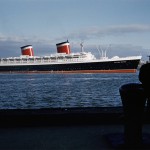
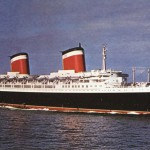
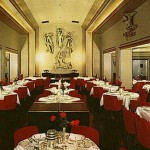

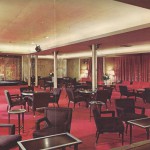

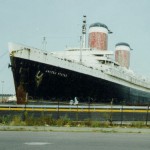
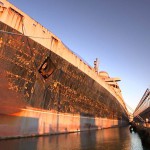
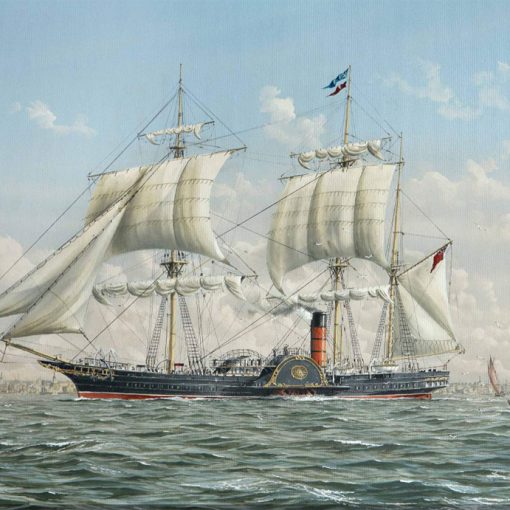
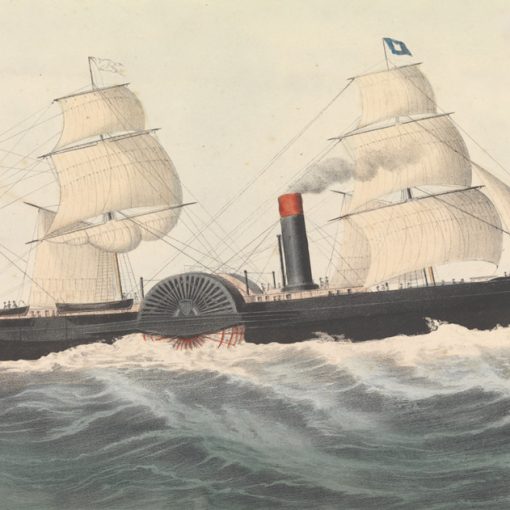
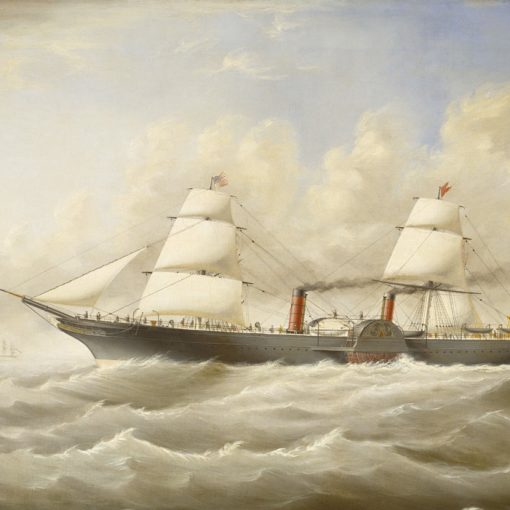
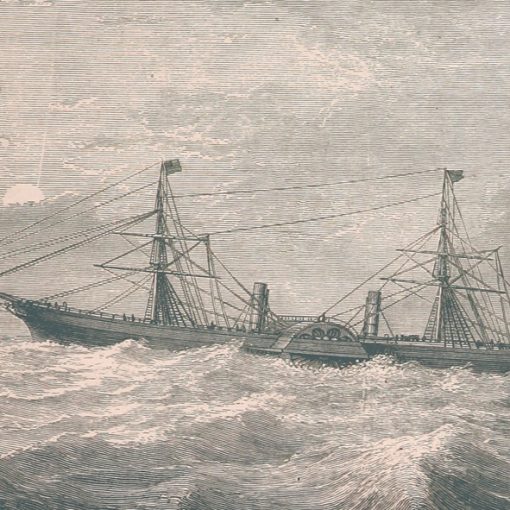
2 thoughts on “United States”
Are you able to add the current fact that the SS United States has left Philadelphia for Mobile, Alabama as of March 3, 2025
Of course, it will be added. Thanks for the reminder.